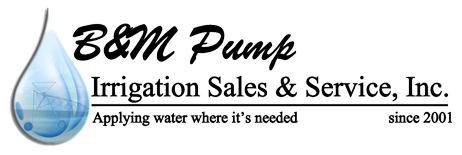An Overview of End-of-Season Crop Irrigation
With severe drought descending upon the Midwest and much of the country this year, you might be wondering when the season’s last crop irrigations should take place. When should you stop irrigating? If you turn off the irrigation too soon, you might miss out on test weight and receive lower than normal corn, soybean and cotton yields—but if your late-season irrigation runs too long, you’ll just waste valuable water and energy.
Here are our best tips for last crop irrigations:
- Account for September rainfall: As we head into the cooler, rainier months, the need for irrigation is less pressing. September tends to bring enough rainfall that you will likely not need to water as frequently as you did during the hot summer months. As the crops mature, it will be easier to tell how much water is necessary to finish out the crop before harvest. Pay attention to plant maturity, soil water content and the upcoming forecasts to determine your irrigation needs.
- Water only when needed: As always, you should only irrigate when your plants need it—since late-season crop water use drops rapidly, you run the risk of overwatering the crops. That’s not only a waste of resources, but it could also do more harm than good. Your goal should be to water the crops just enough to fulfill their yield and quality potential, but not so much that you have a lot of water left over in the soil afterward.
- Minimize the number of applications: When irrigating toward the end of the season, aim for several large water applications rather than multiple smaller ones. Roughly 0.8 to 1.1 inches of water every six to eight days is water-use efficient. It will also help reduce disease potential.
- Probe the soil: The best way to tell when you need to water is to probe the soil—especially when you start dealing with autumn rainstorms. Probe about 12 inches below the soil in the root zone. If the soil is primarily in a loose ball of loam, the soil has some moisture present. If it’s a tight ball, there’s additional moisture present, and you may not need to water for several more days. Alternatively, you can choose to water when your soil approaches 35 percent depletion.
- Mind the heat: Finally, make sure you take the heat into account. If September dawns cool and cloudy, your crops will take more time to use up the rest of the water and finish their growth. If, however, the weather is hot and dry, your crops will still use the same amount of water—it will just take a shorter amount of time before they need to be irrigated again.
Paying careful attention to the weather, the soil and your crop maturity is the key to late season cotton, corn and soybean irrigation.
For irrigation pumps and supplies, https://bmpumpsandirrigation.com/, https://bmpumpsandirrigation.com/, M Pump Irrigation Sales https://bmpumpsandirrigation.com/, https://bmpumpsandirrigation.com/ Service, Inc. is here to help. We offer a variety of irrigation tools to help ensure you get the ideal yield every year.
Categorised in: Irrigation
